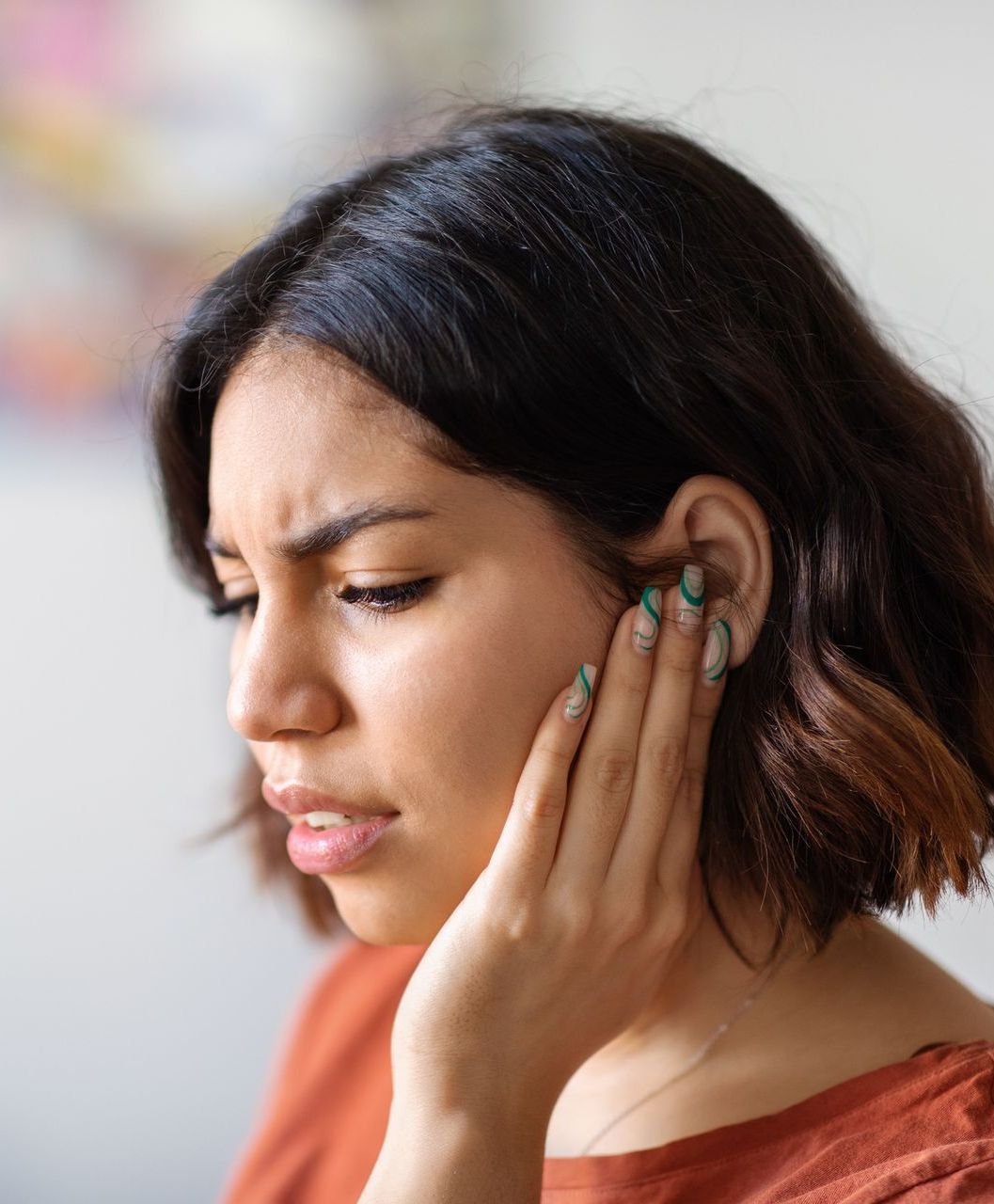Ear Infection

Ear infections can occur in the outer or middle ear. An ear infection occurs in the middle ear when fluid becomes trapped following a viral or bacterial infection. This painful affliction is most common in children, but can affect people of all ages. Infections can also occur in the outer ear.
They are most common when the skin in the outer ear is dry and cracked. Ear infections can be either acute (of short duration) or chronic (persisting or reoccurring frequently).
Acute Ear Infections
Acute infections which can be resolved with antibiotics are quite common. Frequently, children will have difficulties with recurring ear infections. Some children have recurrent infections that are frequent enough that they are considered candidates for myringotomy tubes (tubes in the eardrums). There is no rigid criteria to designate who is a candidate for myringotomy tubes and who is not. The decision is carefully made for each patient after considering their exact circumstances as well as the wishes of the parents and the pediatrician.
Another important factor in this decision is the child’s status with regard to speech development. The child who has delay of normal speech development may be more likely to be considered a candidate for tubes. The reason for this is that recurring infections and/or persistent fluid in the ears often means the child spends significant periods of time with poor hearing. This often causes slower development of speech and language learning. A child having repeated ear infections or with ear fluid, seen by your physician that doesn’t clear within 6-8 weeks, should be evaluated by one our physicians.
It is well known that children are best able to learn speech during their younger years, and it is very important to make sure that children are hearing well so that each child can develop the best possible speech. For children who have tubes placed for recurring ear infections, it has also been well demonstrated that ear infections are much less frequent. This can often dramatically reduce the frequency of illness for the child, ear infections in particular. In many cases, the quality of life is better for the child and family.
In addition to acute ear infections, chronic ear infections are also fairly common. Chronic inflammation of the ears is often present in children who fail to clear the fluid behind the eardrum after an ear infection. Fluid persisting for approximately three months or more is generally considered to be chronic. The likelihood that this fluid will clear is very small after this period of time. These children will generally need tubes placed in order to clear the fluid. The primary problem with chronic fluid is hearing loss. As discussed, hearing is particularly important for young children.
Chronic Ear Infection
Chronic infection is also seen in both children and adults. This is a different problem from chronic fluid just discussed. This usually manifests as either intermittent or persistent infected drainage from the ear. Hearing loss may be present. Occasionally, patients may have dizziness or pain in the ear. These types of infections can sometimes be managed with simple medical treatment in the office but often require surgery to clear the infection.
In addition, chronically infected ears will occasionally develop skin cysts (cholesteatoma) behind the eardrum or in the mastoid (the part of the skull behind the ear). These skin cysts grow slowly over months and years and can cause serious or life-threatening infection in or around the brain. For patients with cholesteatoma and for many patients with chronic ear infections, surgery is the treatment of choice. The goals of surgery are to (1) make the ear safe, (2) clear up the infection and (3) improve hearing whenever possible.
Otitis media is the medical term for an inflammation of the middle ear, commonly referred to as an ear infection.
The majority of ear infections are viral or bacterial in nature, usually occurring after a cold or upper respiratory infection. These conditions cause swelling of the eustachian tube, a small canal that connects the middle ear to the nostrils and provides an outlet for fluid drainage, trapping germs and fluid in the middle ear and leading to infection.
Because children are still growing physically, some of their internal organs may also be temporarily underdeveloped. This is true of the eustachian tube, the vertical canal that connects the middle ear to the nostrils, providing an outlet for fluid drainage. eustachian tubes in children are still horizontal and therefore don’t drain the fluid efficiently.
Because the eustachian tube is smaller in children, it is more prone to swelling; when this occurs, fluid is trapped in the middle ear. This fluid presses against the eardrum, causing pain, and can harbor germs that lead to infection. The result is an earache and, in some cases, loss of hearing. When the infection does not completely go away or returns often, it is referred to as chronic.
What Are the Symptoms of an Ear Infection?
The hallmark signs of otitis media are pain and pressure in the ear and fluid drainage. These may be accompanied by a low-grade fever and hearing loss. Infants are often fussier than usual, and may cry inconsolably, refuse to eat and have trouble sleeping. They may also pull or tug on the ear. Symptoms may be milder in chronic ear infections. Should your child display any of these symptoms, bring them to the doctor; the sooner an acute ear infection is treated, the lower the chances of it developing into a chronic condition.
How Are Ear Infections Treated?
Treating an ear infection begins at home. To help soothe symptoms, gently press a warm washcloth against the affected ear. You may give your child eardrops and over-the-counter medications such as acetaminophen or ibuprofen to help relieve pain. Avoid aspirin, which can be dangerous to young children.
Your child’s doctor will likely prescribe antibiotics to treat a chronic ear infection. These should be taken until used up, even if your child’s symptoms appear to be improving; otherwise, the infection could worsen.
When medication is not effective, a surgical solution involving ear tubes may be considered. These are inserted in the middle ear and provide ventilation and fluids, keeping the ear clear and preventing infection. Most ear tubes remain in place anywhere from six to 18 months and eventually fall out on their own. If not, surgery to remove them is performed.
Can Ear Infections Cause Complications?
If left untreated, chronic ear infections can lead to a variety of complications including hearing loss, damage to the bones in the middle ear, balance problems, a middle ear cyst called a cholesteatoma, facial paralysis and inflammation of the brain. For these reasons, early detection and treatment are crucial. Better still is prevention.
You can’t always stave off an ear infection, but there are steps you can take to reduce the chances of your child developing one. These include breast-feeding your baby, making sure they are up-to-date on vaccinations, practicing good hygiene (e.g., regular hand-washing), keeping your child away from tobacco smoke, and enrolling them in as small a day care or preschool facility as possible. Simply put, fewer children mean fewer germs.
Call Eastern Carolina ENT Head & Neck Surgery at 252-752-5227 for more information or to schedule an appointment.

